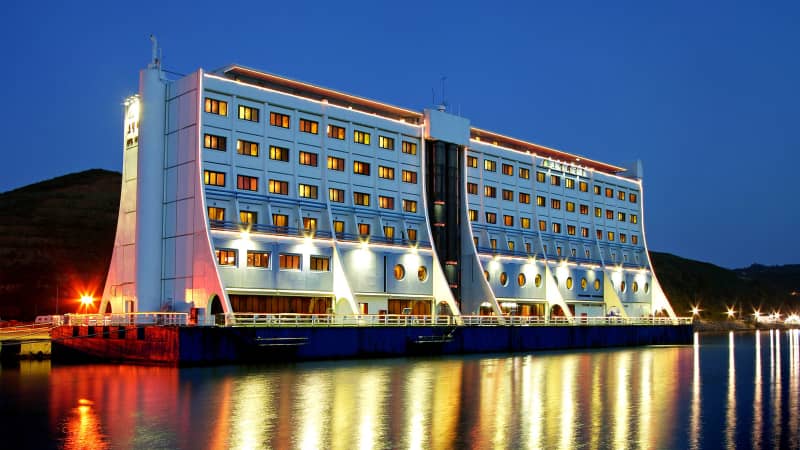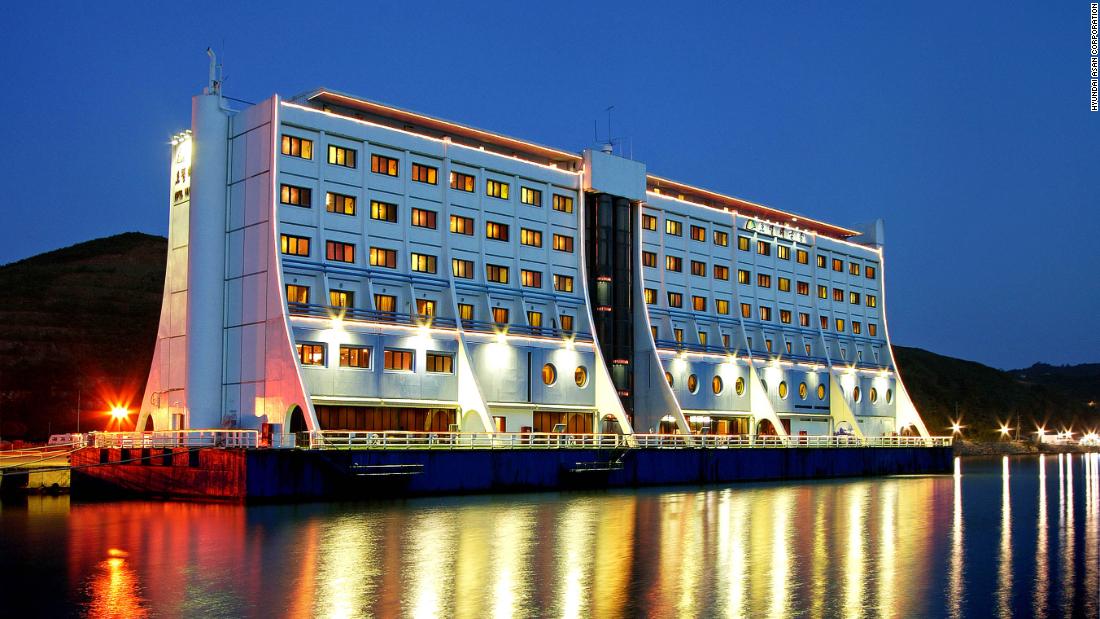Mount Kumgang, whose name is Korean for “Diamond,” has been a site for rare moments of reconciliation between citizens of the two countries, who are still technically at war.
An official from the South Korean Unification Ministry told CNN that they spotted what appears to be “dismantling activity” at multiple sites at Mount Kumgang.
The news comes months after unconfirmed reports suggested that buildings in the complex had been demolished.
Onjonggak Rest House, located at the foot of Mount Kumgang, is where the much-publicized reunions of separated families from South and North have previously taken place.
Also cited as possibly destroyed recently this week was Hyundai Asan’s office at Kumgang. The South Korean-owned company was responsible for managing the tourist area.
“Mount Kumgang tours improved inter-Korean reconciliation and served as a pivotal point for inter-Korean exchange,” Hyundai Asan spokesman Park Sung-uk told CNN previously.

The world’s first ever floating hotel was built in Australia and eventually ended up in Kumgang.
Hyundai Asan Corporation
In addition, North Korea began dismantling the famous Hotel Haegumgang in April. Once a luxury resort that floated over Australia’s Great Barrier Reef, the hotel was moved to Kumgang and opened to tourists in 2000.
The official also said that they are closely monitoring whether North Korea would demolish the family reunion center and Kumgang community center, adding that they cannot confirm this information yet.
The Kumgang resort, which is about 30 minutes north of the Korean Demilitarized Zone (DMZ), was co-managed by the two Koreas.
It ceased welcoming tourists in 2008 after a North Korean soldier shot and killed a South Korean woman who wandered past the boundaries of the Mount Kumgang tourist area and into a military zone.
North Korea is reportedly planning to replace all the structures at Mount Kumgang with new ones, potentially signaling that their government plans to manage and control the resort area without any assistance from its southern neighbor.
Jacopo Prisco contributed reporting.
